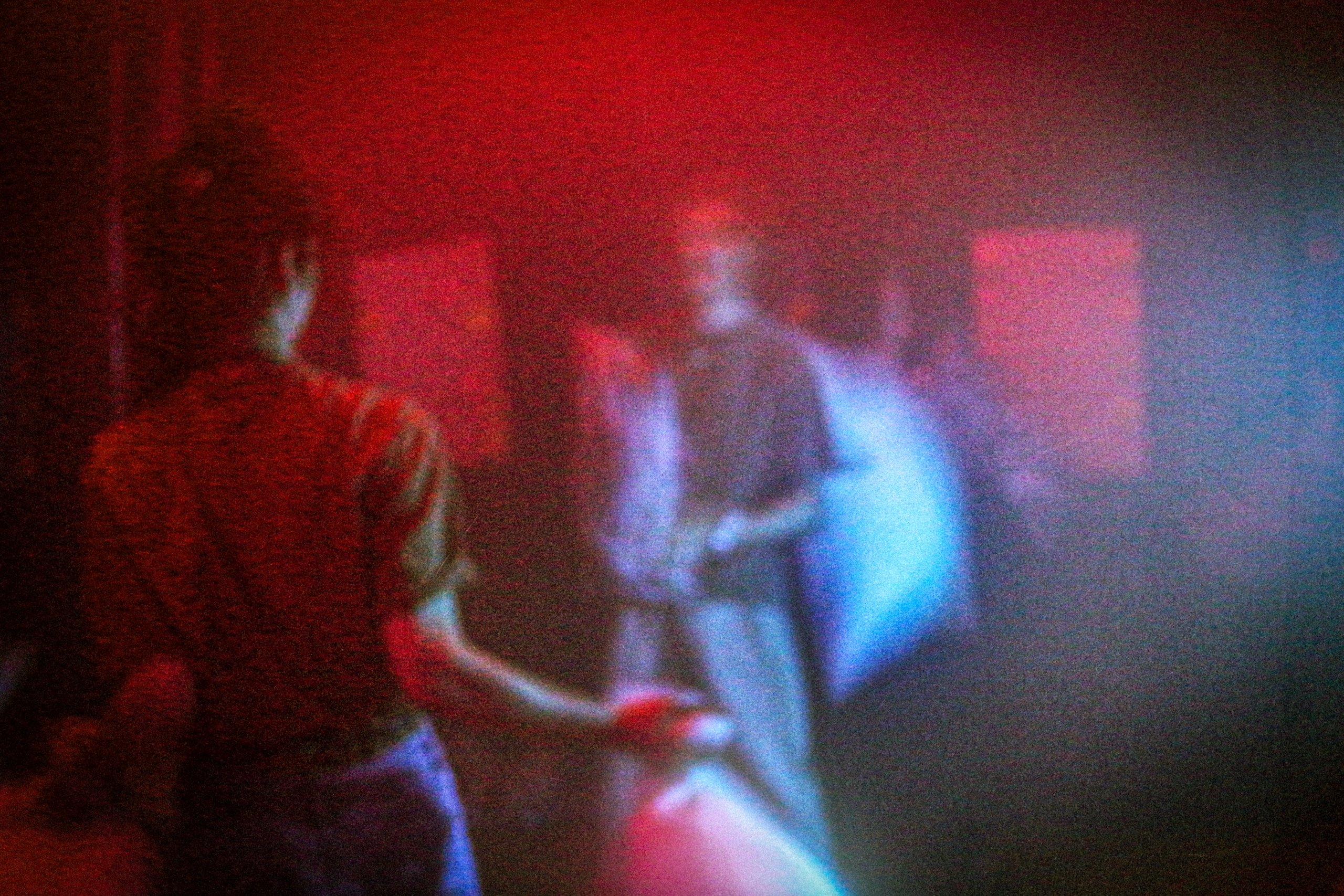
Pillow Fight: How it Hit
As we’re wrapping up, we’re reflecting. The first OOST research cycle is coming to its conclusion, but not before we amplify the experiences had at the midway event; a panel discussion followed up with a pillow-fight-gone-club-night soundtracked by hyperpop. All in an effort to examine club safety through a different lens. Over the next weeks, we’ll hear from three people involved. Today, academic researcher Ruby looks back at what, tongue in cheek, can be called a smash hit.
Words by Ruby Schofield / Pictures by Nadiya Vasylyeva
“Wait, there’s going to be an actual pillow fight?”
I heard someone exclaim, with some degree of trepidation, as the lights went down, and the chaotic, jarring sounds of the first hyperpop track filled the room. If participants hadn’t already realised, then they soon would; “Pillow Fight” was not just a metaphor.
In case you missed it, and all this sounds like some strange dream, let me catch you up. It’s a warm and sticky evening back in mid-May, and OOST is hosting a very different kind of club night, made up of an interactive panel discussion with an academic, a sexual health nurse, and a DJ, as well as a hyperpop party, with an actual pillow fight. All in the name of research.
We’re talking, of course, about OOST’s “Cyclus” initiative, a continuous research cycle exploring various topics relevant to night culture. Split into separate projects each lasting half a year, Cyclus brings together an artist and a researcher to investigate a chosen theme. We – that’s me, Ruby, the project’s academic researcher, and Enrica, the project’s artist – are working on the pilot, and our theme is club safety. Combining our research interests and disciplines (and in collaboration with experts, artists, and audiences), we’re organising various events on the topic and we will ultimately produce a publication with our findings.
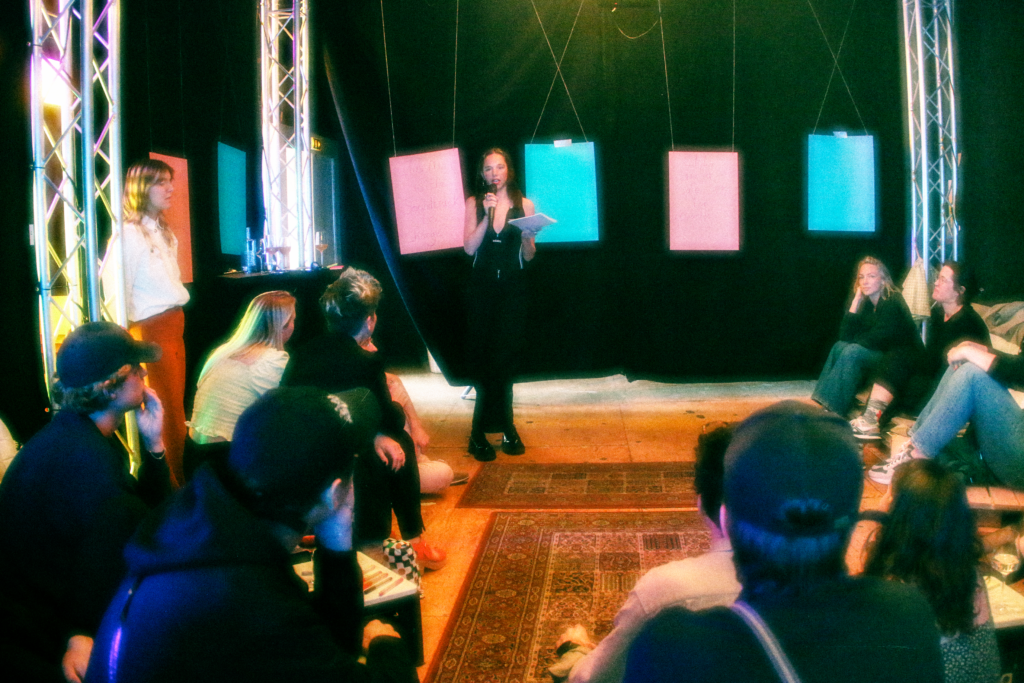
“Pillow Fight” was our first event. Kicking things off with a panel discussion, our host, Thijs Ringelberg, our speakers, Beate Peter, Coco Coquelicot, and Mariëtte Lintveld, and our audience meditated on our project’s central tension. That is, the tension between, on the one hand, a “utopian” discourse about club culture, which claims that underground clubs are spaces in which everyone is welcome, and a messier reality, plagued by unsafety in the form of racism, misogyny, queerphobia, and sexual harassment.
The discussion was followed by a hyperpop party and a pillow fight, which sought to explore this tension in more practical terms. The night featured DJ’s Himera, Screenage DJ, Achilles World and Jochemjochemjochem. A metaphor for the club space – with its potential for childlike exploration as well as aggression, conflict, and danger – the pillow fight brought to life some of the insights on safety from our speakers.
In this series, we offer our reflections on the event. Over the next weeks, we’ll hear from three people involved. First, from the project’s academic researcher, Ruby, who offers insights on the project’s central tension; then, from the project’s artistic researcher, Enrica, who talks us through her artistic process and then, finally, from Tom, facilitator and a participant in the pillow fight, who offers his personal reflections on the experience.
I’ll be honest.
The first time Enrica mentioned the words ‘pillow fight’ to me – loudly and directly into my ear, early on a Sunday morning back in February on the dancefloor of OOST – I had some doubts. ‘A pillow fight?’. What does that have to do with social safety? I thought (but didn’t say). ‘I’ll explain later’, she said.
Before I knew it, we were hauling 30 pillows, stuffed into IKEA bags, across the city on one of the hottest days of the year. Turns out – as is often the case – my doubts were unfounded. ‘Enrica is a genius’, someone breathlessly told me, emerging from the upstairs room covered in synthetic feathers. Of course, the pillow fight performance was the perfect metaphor for social safety. Here, I want to reflect on some of the reasons why, and share some thoughts with you from this midway point in our project.
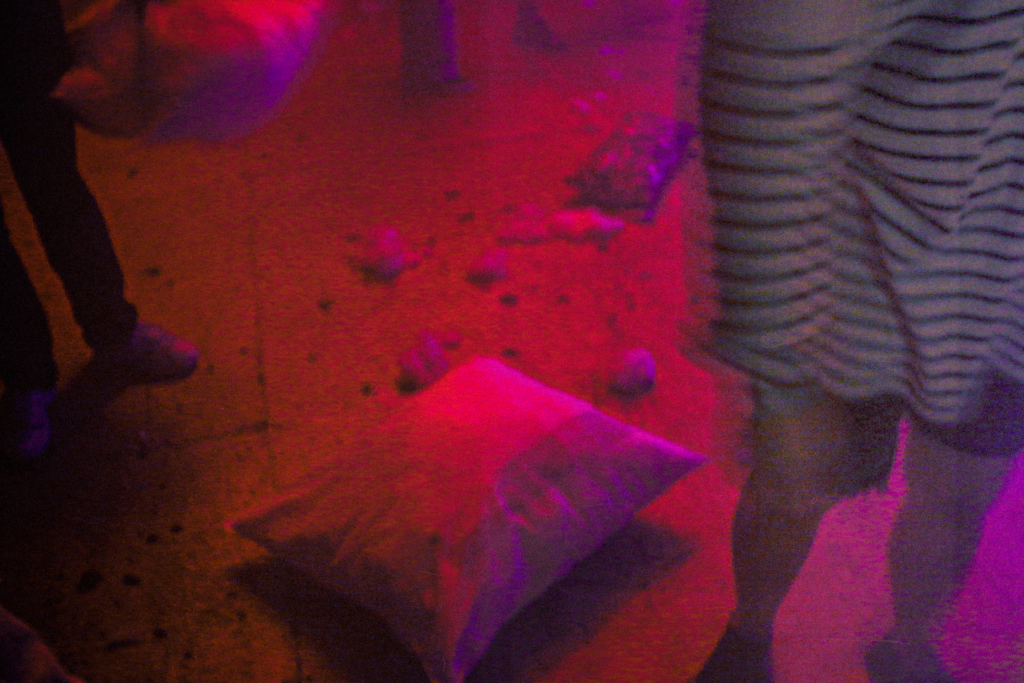
As academic and seasoned raver Beate Peter explained in the panel discussion, underground club spaces play host to a whole range of different visitors who have a whole range of different intentions. Referencing McKenzie Wark’s brilliant book ‘Raving’, Beate talked the audience through one of the ‘social types’ we might find in the club space.
The punisher, Beate explained, only attends raves for spectacle purposes. You’ll find him (yes, him) standing ‘stock still’ in front of the DJ for most of the night. He’s probably on his phone; he might even use it to take a picture of you and post it on the internet. Occasionally and perhaps in collaboration with other punishers, he’ll lift up his beer can and spray the contents all over you. Punishers move around the space as if you’re not there. Perhaps inevitably, he (yes, he) appeared in the pillow fight, determinedly pursuing strangers to beat over the head – with pillows, I must add – whether they liked it or not.
We can discern the punisher from other social types, for whom raving/dancing/sweating is a collaborative process of being together. A weekly practice, perhaps. We met some of these figures in the pillow fight, too. They invited you in and asked for your blessing before backing you into a corner, pillow in hand.
And so we arrive – as Enrica surely knew we would – at the project’s central tension; a nest of ambivalences that complicate any apparently straightforward claims about ‘safety’ in club spaces. In the panel discussion we got familiar with the utopian narrative surrounding club culture. The underground club is a site of radical politics, it says, a space you can go to transcend social norms and expectations; a space in which the usual (social, cultural, economic, political) divisions can be set aside. Everyone is welcome here, the utopian narrative goes.
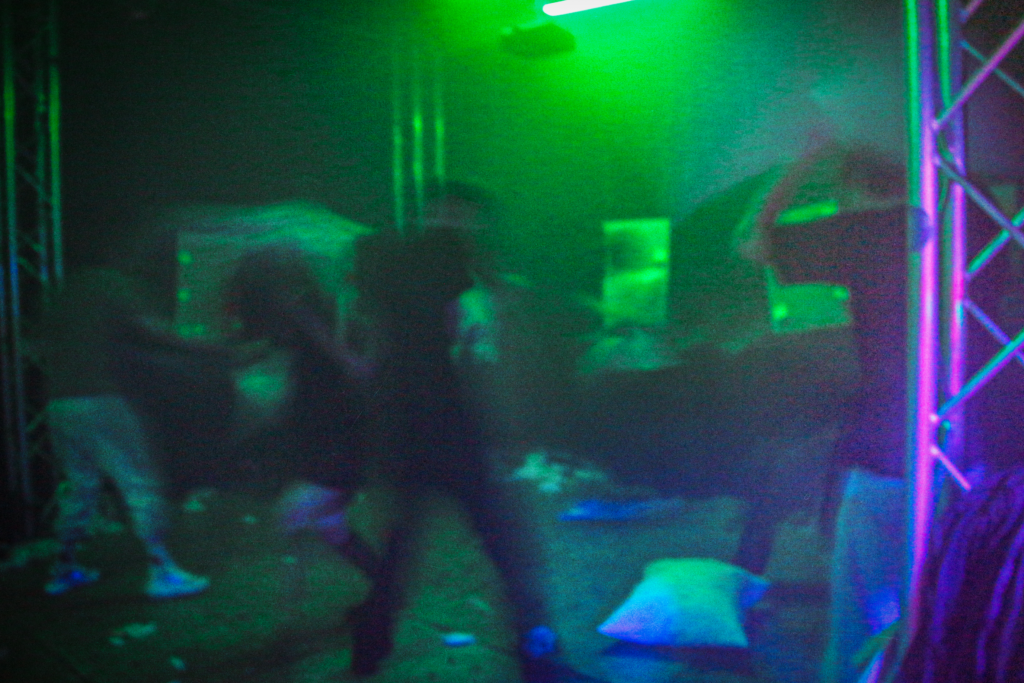
But should they be? Punishers, aside from soaking you with their beer, are known to also sexually assault you, make racist remarks, intimidate you, make you feel like you’re not welcome. Here, my perspective might differ from Enrica’s – I think to create a safe environment, we do need to exclude people. This, as Beate explained, is what a good bouncer who ‘gets it’ might do. Better still, in thriving cities with many clubs and scenes to choose from, this (necessary) process of exclusion can become self-selecting.
But there are bad bouncers, and we cannot ignore that gentrification and the profit-oriented regulation of nightlife is leading to club closures and restrictions on night culture, meaning the punishers and the ravers are no longer ‘12 clubs apart’. This reveals another tension in the utopian narrative. At the door and beyond, racism, sexism, queer- and transphobia, sexual harassment and discrimination abound; people have unsafe experiences in the club all the time. Not everyone is welcome here, it seems.
How do we create safety amid all these tensions? We need to start by acknowledging that clubs are – and always will be – complex sites of ambivalence. Perhaps this is unsatisfying, and this project certainly strives to do more than say ‘it’s complicated’. But until we show you our findings in September, I want to end with something McKenzie Wark said, which I think gets closest to the truth: ‘on a good night, there’s the possibility that some few people for some few moments – might get free’.
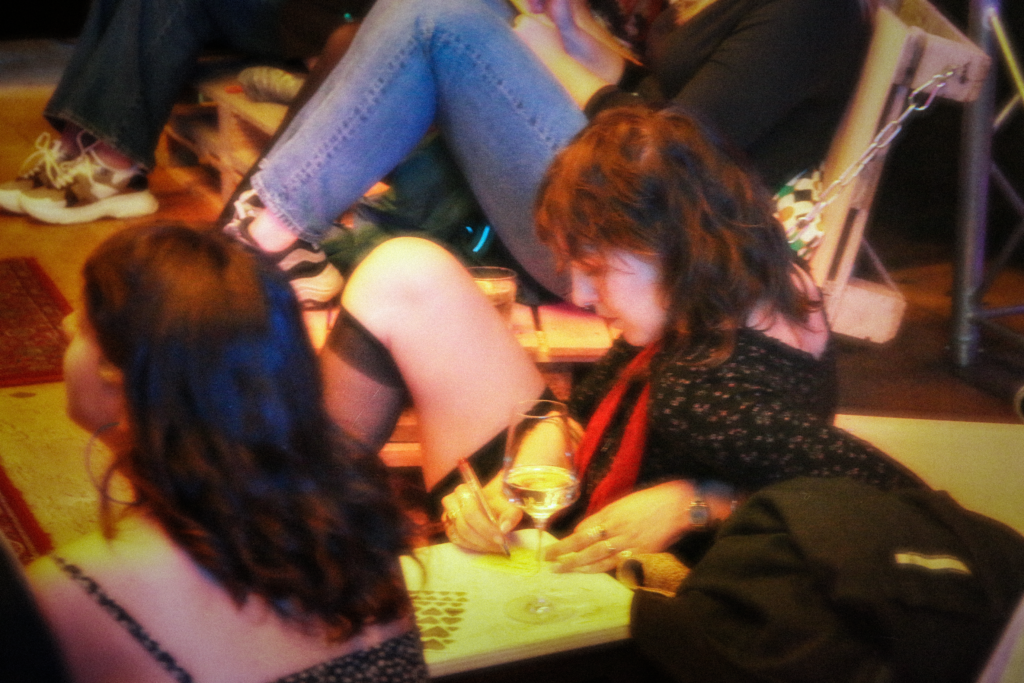
The first cycle started in January 2024 and will run until August 2024. At the end of this Cycle, Ruby and Enrica’s work will be made available by means of a publication in image and text. More on that later.
Cyclus is made possible by contributions of the Kunstraad.
